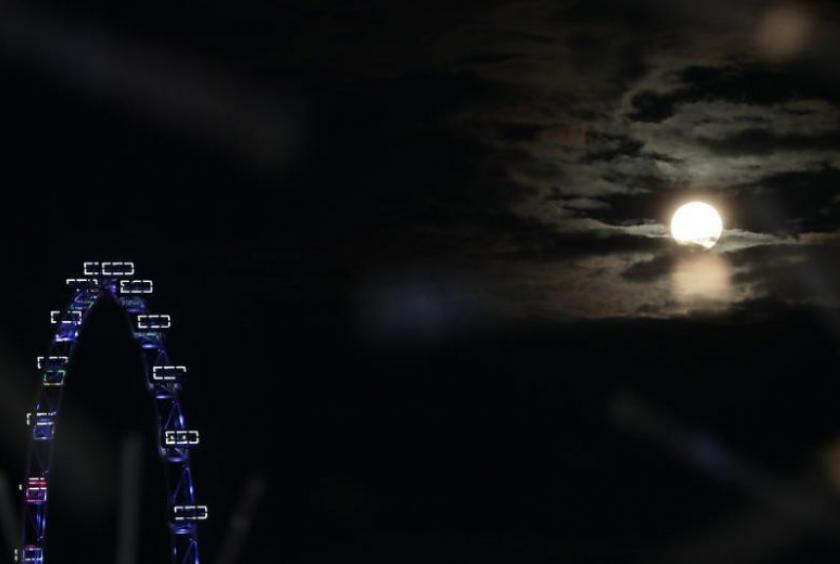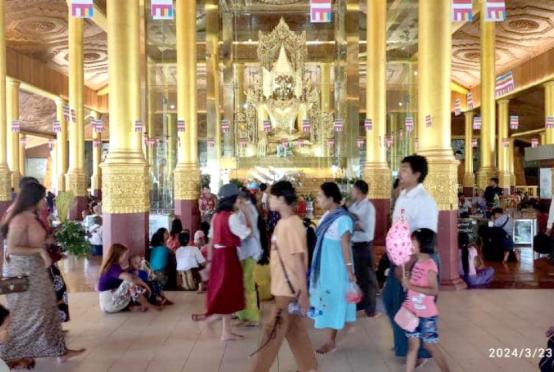
SINGAPORE (The Straits Times) - The biggest and brightest full moon of the year was visible in many parts of Singapore on Tuesday night (Feb 19).
The phenomenon, called the supermoon, coincided with the annual Lantern Festival which marks the end of the 15-day Chinese New Year celebrations - or Chap Goh Meh.
What makes a supermoon so spectacular?
The Straits Times takes a look at this lunar event and the moon's many other faces.
1. SUPERMOON
This refers to when a full moon coincides with the Moon being the closest to Earth. This point is also known as the perigee.
While there is no strict definition, this distance can be roughly less than 360,000km from the centre of the Earth.
The average distance between the Earth and the Moon is 382,500km.
If you miss Tuesday's event, you won't see a supermoon that is as big or bright until 2026.
2. RED OR BLOOD MOON
The Moon appears a coppery red during lunar eclipses due to a simple phenomenon of optics: refraction.
Due to the eclipse, the only light reflected from the surface of the Moon is refracted by the Earth's atmosphere.
Particles in the atmosphere are smaller than the wavelengths of sunlight, which is made up of different colours.
Colours in the light that have shorter wavelengths (for example, blue) are scattered more strongly, and so are removed before the light hits the surface of the Moon during the eclipse.
Those with long wavelengths - red and orange - pass through and get refracted.
This effect is known as Rayleigh scattering, the same reason why the sky is blue or sunsets are red.
During a total lunar eclipse, the Moon can become a particularly deep, coppery red, and calling it "blood moon" probably arose out of a desire to make the event more dramatic.
3. BLUE MOON
A blue moon can refer to either the second full moon in a month that has two full moons, or the third full moon in an astronomical season of four full moons.
A moon that actually looks blue is - as the cliche suggests - very rare.
Only particles of a certain size in the air slightly wider than 900 nanometres can cause red light to scatter, making the moon seem blue.
This sometimes happens after forest fires or volcanic eruptions. For instance, reports of blue-coloured moon sightings followed the eruptions of Mount St Helens in the United States in 1980 and Mount Pinatubo in the Philippines in 1991.
4. BLACK MOON
A black moon can refer to the second new moon in a month, where the moon is completely invisible. They occur once about every 32 months.
Another definition refers to the case where no new moons appear for an entire month, a situation only possible in February.
As February has 28 days and lunar cycles are 29.5 days, the month can sometimes miss either a full or new moon.
5. MICROMOON
A micromoon is so named because it looks smaller and less bright, appearing about 14 per cent smaller than normal.
This happens when a full or new moon coincides with the point in the Moon's orbit that is farthest away from the Earth.
This point is also known as the apogee, and can be anything farther than 405,000km from the centre of the Earth.

SOURCES: SCIENCE CENTRE SINGAPORE, NASA, EARTHSKY.ORG; PHOTOS: ST FILE, REUTERS, STRAITS TIMES GRAPHICS
https://www.straitstimes.com/singapore/biggest-supermoon-of-2019-all-you...















